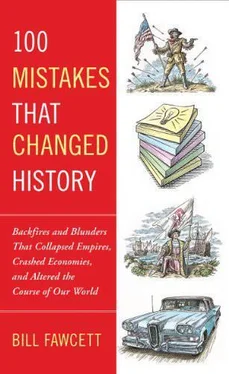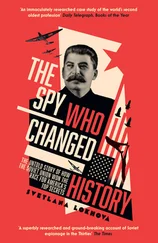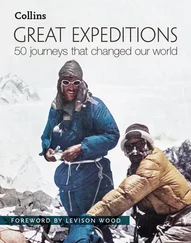After taking some time to gather the 2,000 horsemen who would accompany him on the raid, Stuart crossed the Potomac where ordered to and passed through the Bull Run Mountains. Then things began to go wrong. At the town of Haymarket, Confederate scouts discovered Hancock’s entire infantry corps moving north. At this point, there was no choice: Stuart’s mounted force had to avoid the much larger infantry corps. So on June 26, Stuart ordered his entire force to go south, which resulted in being behind the entire Army of the Potomac. This also meant that a large part of the Union Army was between him and Lee. Communications with the Army of Virginia became, at best, difficult.
Then things began to slow down for Stuart’s normally rapidly moving horsemen. Troops in this period carried few supplies. This was particularly true of cavalry. Simply put, horses eat a lot. They had to purchase, or take, virtually all the food, grain, and so on they needed from local sources. Living off the land normally allowed cavalry to move much more quickly because they were without the slow supply wagons to hold them back. The dark side of this equation was that it meant Stuart’s force had very few supplies with it, and virtually no feed for their horses. The countryside they rode through had already been picked clean by the Union Army just days before. There was no more grain or fodder of any sort at the farms the raiders passed near. This lack of fodder meant that on June 27 Stuart’s cavalry lost several hours to grazing and foraging. On some earlier raids, Stuart’s cavalry had moved as much as fifty miles per day, but now in two days they had moved a total of only thirty-five miles and much of it in an unplanned direction that took them farther away from the Army of Virginia. More important, Lee had begun to move north, and Stuart’s raiders no longer had any way to even know where their main army was located. Stuart could not report what he saw to Lee because he didn’t know where General Lee was located. In fact, a messenger sent to Lee on the twenty-eighth, with the intelligence Stuart had gained thus far, never was able to deliver the information.
Because of the need to again cross the Potomac unobserved, Stuart’s force next had to use an inferior and dangerous crossing known as Rowser’s Ford. At this point, the river was nearly a mile wide and chest deep on the horses. It took a good portion of the night of the twenty-seventh before the crossing was completed.
It was late in the morning of June 28 before the exhausted Southern horsemen were again moving. Later that day, they reached Rockville, which created the consternation Stuart desired by being only fifteen miles from Washington, D.C. There the Confederates spent the day paroling more than 400 captives while resting and feeding men and horses. After a twenty-mile night march on June 29, one of Stuart’s Confederate brigades under Fitz Lee began tearing up the B&O Railroad tracks. Since the Union Army moved most of its supplies by rail, this was also a slow but very effective action. The loss of the railroad diminished both the supplies and reinforcements that could be sent to Meade, who had by then taken over from Hooker as Union commander. A train of 125 supply-laden wagons, a real prize, was next captured intact. These seem to have been new wagons in great condition by later accounts. They were piled high with all sorts of supplies Lee could use. The wagons were added to the cavalry column. These spoils of war were too good to pass up but also had the effect of slowing Stuart.
On that same day, Early and some Union cavalry were camped in a small town named Gettysburg. Unaware that the entire Union Army had marched north and were near, Lee had ordered his separated divisions to gather in that same Pennsylvania town.
After he had captured the supply wagons, Stuart’s entire column overcame the stiff resistance of a small Union force at the town of Westminster and camped for the night to take advantage of the plentiful supplies stored there. Neither Stuart nor Lee knew where the other Southern commander was. More important, without enough cavalry to scout for him, Lee was just learning that the entire Army of the Potomac was nearby.
By this time there were several columns of Union cavalry hunting for the raiders, and one was encountered at the city of Hanover. The Union force was driven from the town, then countercharged and chased the foremost Confederate troopers back onto their main column. That Union countercharge was then stopped. Stuart formed a defensive line on a nearby hilltop. Here both cavalry forces sat until Stuart was able to send the captured wagons safely ahead. The Confederates then slipped away. The next day, July 1, Stuart turned north and camped near the town of Dover. From there, he sent out two troops of riders hoping to locate Lee. One of these rode toward Gettysburg, the others toward Shippensburg.
This was on the first day of what is now called the Battle of Gettysburg.
Stuart left Dover later in the day and in Carlisle, Pennsylvania, encountered stiff resistance from a brigade of Union infantry commanded by William “Baldy” Smith. The Confederate commander called on the infantry to surrender and threatened to bombard the town with his horse-drawn cannon. Smith replied, “Shell away.” So the Confederate horsemen did. The fighting at Carlisle continued late into the night, with Smith refusing yet another demand to surrender.
The next day, the troopers he had sent to Gettysburg found Stuart and passed on Lee’s order that he hurry with his entire column to join the battle there. It was now in its second day. On July 2, Stuart led his already exhausted riders toward Gettysburg.
Eight very active days after separating Stuart’s brigades, he rejoined the Army of Virginia. Having been forced away twice, the raid had taken much longer than expected. Lee’s first words were “Stuart, where have you been?”
The Confederate Army lost the Battle of Gettysburg, and with it, virtually all hope of winning the American Civil War. Would Lee have fought that battle there if he had been given good intelligence as to the position of the Union Army? Would Lee have won if he had instead retreated and fought the defensive battle he had told his commanders earlier that he desired? There is no way to tell. What is certain is that Lee allowing his “eyes and ears” to be absent at such a vital time meant that both armies blundered into the Battle of Gettysburg. That need not have been the case. And Stuart’s mistake of turning away and moving slowly out of contact for several extra days meant that his cavalry could not be there for Lee when they were needed. There were a lot of other mistakes made by both sides at Gettysburg during the battle, but these two mistakes, Lee’s order and Stuart’s detours, combined to ensure the battle itself happened. And after Gettysburg, the Confederacy was never again able to do more than slow its inevitable defeat.
The Last Measure
1863
It was the night of the second day of Gettysburg. Thousands of men had died on both sides. Lee needed a victory, and the Union Army was dug in on the hills. Lee could not just retreat intact. He needed to win, preferably big. The war had been going on for three years, and from a strong beginning marked by remarkable victories, the Confederacy was now being ground down. Much of the West had been lost and Vicksburg, the South’s last bastion on the Mississippi, was under siege. The Union blockade had isolated the rebels from Europe and the European powers. France and England were anxious to support the Southern cause, but not until it was shown that the Confederacy would survive. Just defending was not enough. There was no hope of winning a battle of attrition against the more populous and prosperous North. A victory over the Union in Pennsylvania would show that no part of the North was safe. It would prove that the Southern cause was able to defend itself, and a victory might put enough pressure on Lincoln that he would have to accept a separate peace. Then France and England would have a reason to recognize the Confederacy, and their navies would open the blockaded ports. With European weapons and financial support, the tide of victory would again favor the South. As an added bonus, a big win would likely mean defeat for their most hated enemy, President Abraham Lincoln, in the fall election.
Читать дальше












